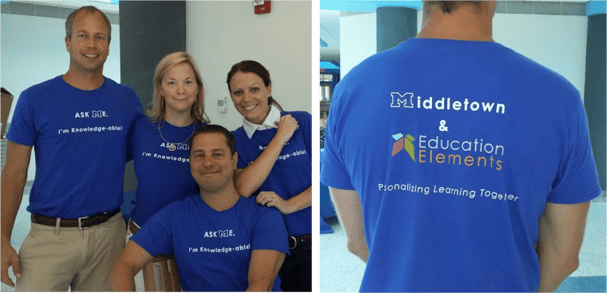
“It will transform your teaching!”
“It’s new and exciting!”
“We need teachers to “opt-in” and give it a shot!”
We learned about it, opted-in, and spent many days over the summer figuring out how it would “look” and “work” within our classrooms.
And we have never looked back…
We were amazed at where the initial diagnostics placed the students. Many were well below grade level – seeing some of our students placed at primary grade levels was eye opening. At first we thought that this just could not be! How could our students need to work on kindergarten or first grade skills? They were in fifth grade after all! However, with trust in the system and wanting to dive into this initiative wholeheartedly, we worked with the students in our teacher-led groups, and we found out that, yes, in fact the students had many gaps and needed to go back to a much earlier grade in order to make significant progress this year. It was a shock but good to know what to do.
Using the data to flexibly group our students has been crucial for us. We see data about the students daily and that information is organized in a number of different ways so that we are able to group children by a skill or by a proficiency level. Having this information is tremendously helpful when trying to target specific gaps children have regarding the common core standards.
Math and Reading groups change daily because of the independent aspect of Blended Learning. We are able to see current data and create our groups to meet the students’ needs. At first, the entire process seemed overwhelming. There is a tremendous amount of data available to the teacher. Eventually, it got easier. If you are starting a specific unit you can analyze the data to see exactly how many pre-requisite skills each student needs in order to meet your standards. The data helped us know what to teach.
Middletown’s Blended Learning model, created with the support of Education Elements and refined through their ongoing support and professional development sessions, provides different activities for each child to participate in on a daily basis. Students spend their time working independently, with a teacher led group or in a collaborative group with their peers. Once classroom routines are established, there are few disruptions during instructional time. The students are fully engaged when working independently with the online content. It is amazing the conversations that take place in the collaborative station, whether it is a book talk or solving a word problem in multiple ways.
Once students were more comfortable analyzing their own data, they were able to take accountability for the programs they were choosing to go on. Through goal setting, students choose content that best fits their needs, both in the areas of ELA and math. Throughout the year, students became more confident justifying their choice of digital content. Overall, by choosing their own content, students were much more engaged.
This year has been an invaluable experience here in Middletown, for both teachers and students. Students now see the value in their own learning, are accountable for their progress and are eager to seek out new ways to learn. Teachers are now more effective and are working closely with the students in their classrooms each day.
We came, we saw.. We Blended!
About The Authors
Suzanne Henson, Lori Lawrence, Rosi McFadden, Ashley Rebmann are all teachers in Middletown, NY. The authors, a highly collaborative group of 5th grade teachers at Maple Hill Elementary school in Middletown, NY, recently completed their first year teaching in blended classrooms. The four teachers are departmentalized, focusing on either ELA or Math/Science/Social Studies, and have successfully been able to implement personalized learning strategies through an in-class station rotation model. These teachers were part of the first phase of 33 opt-in teachers from the district to "go blended" and have pioneered the way in exemplifying manageable data analysis protocols and best practices in student accountability and ownership. As the district looks to roll out blended learning across six schools, impacted more than 6,000 K-8 students and 250+ teachers, we know that the excitement and success experience by the district's very own teachers and students will certain help pave the way for more classes to opt-in to the movement.



